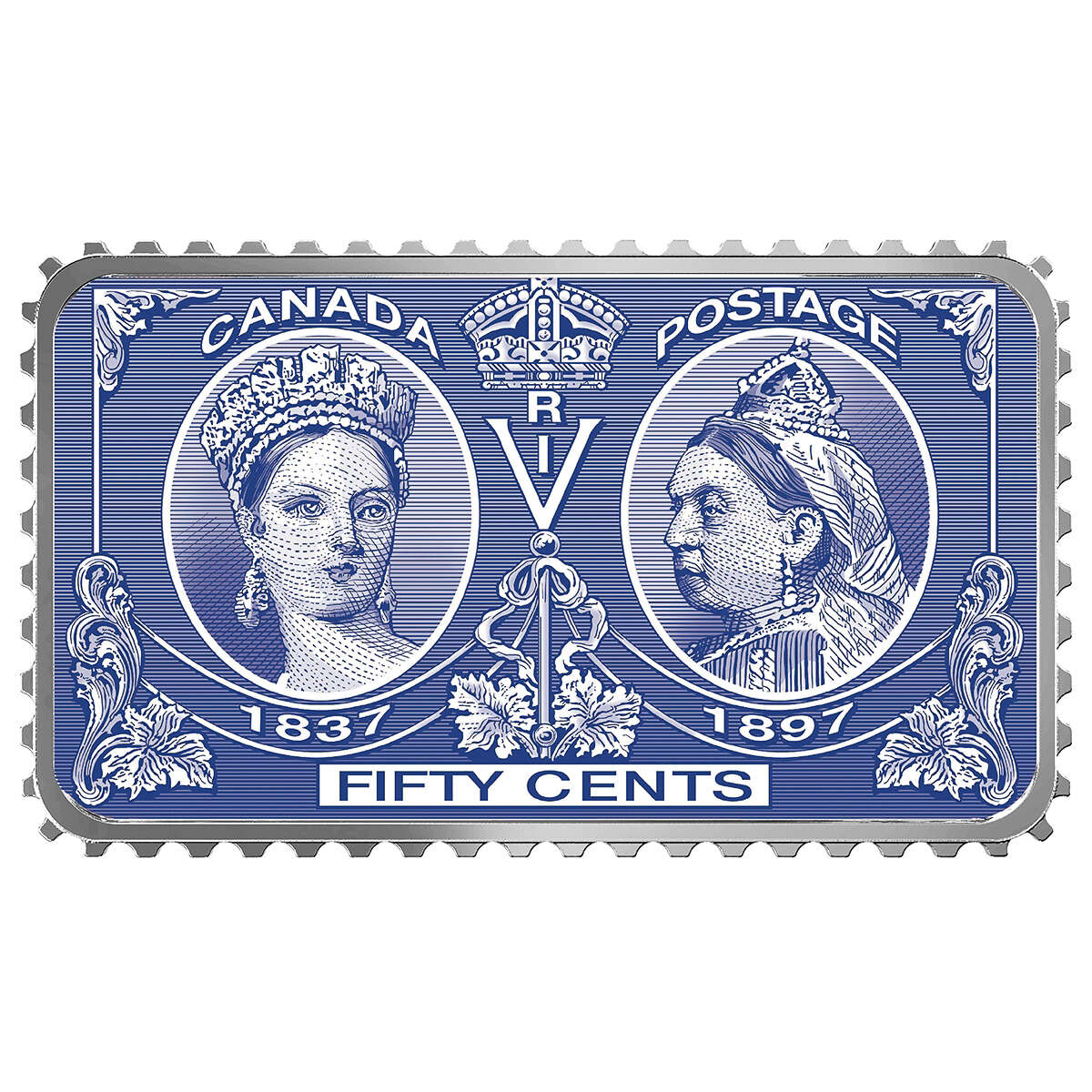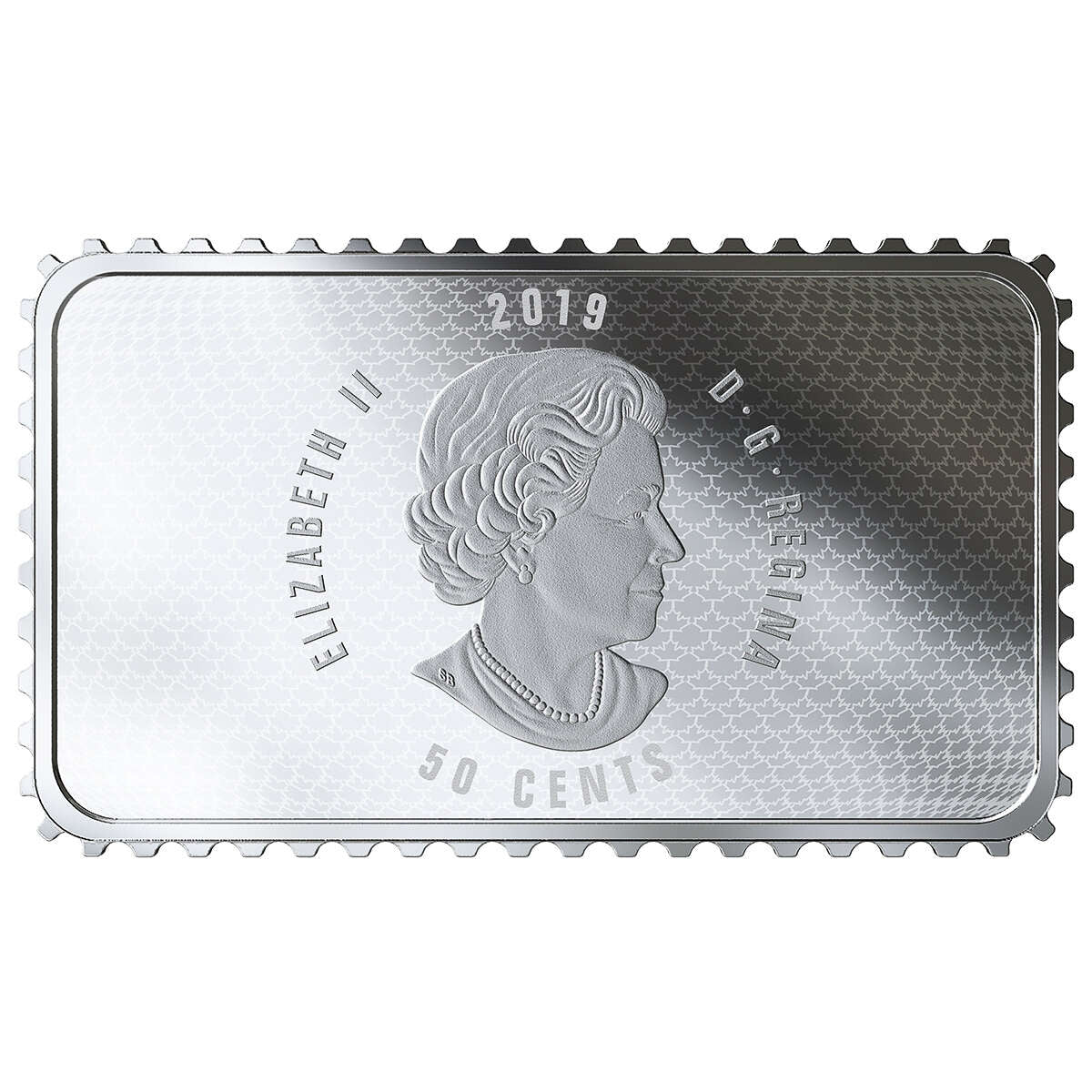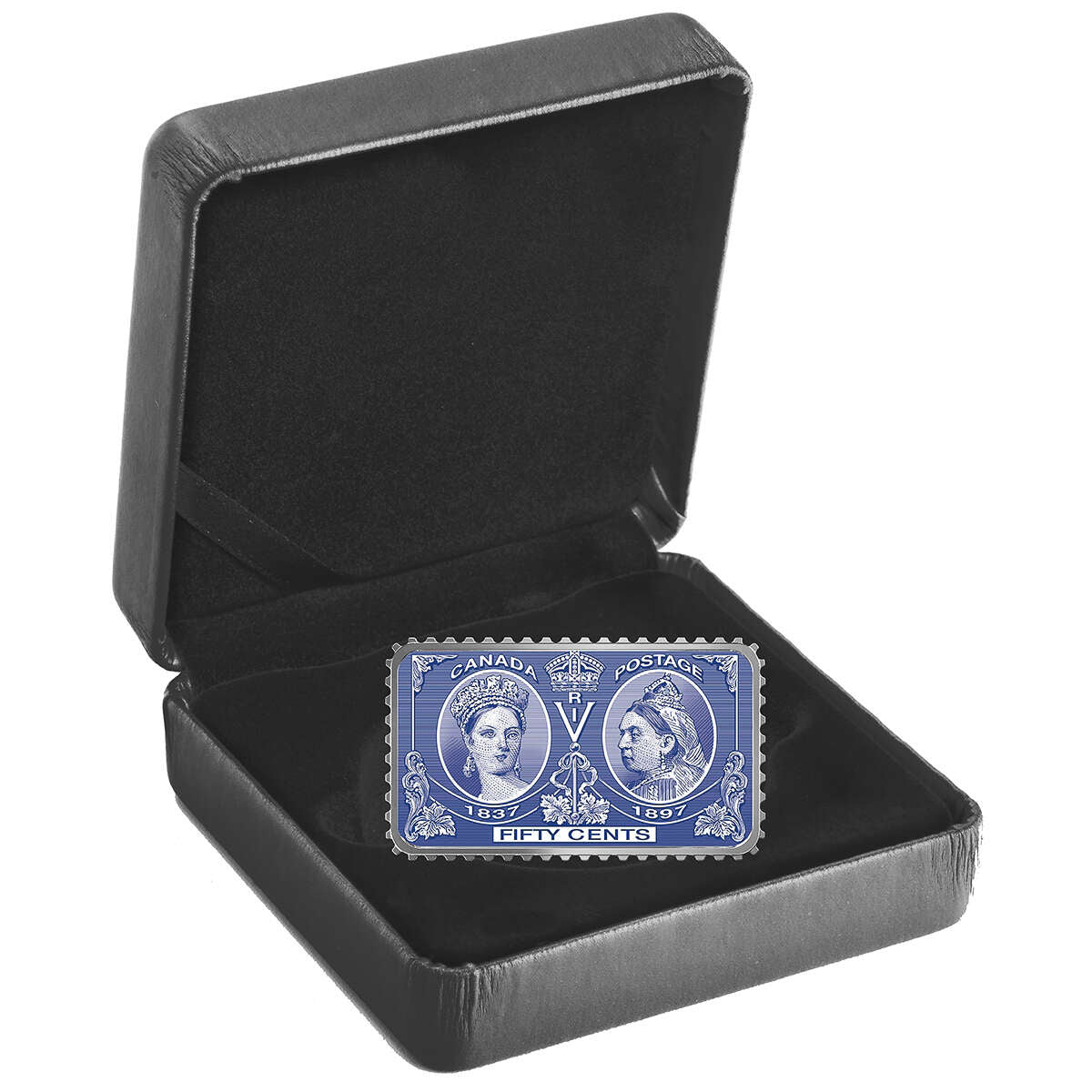Description
This stamp-inspired one ounce fine silver 50 cent coin is a tribute to mark the 200th anniversary of the birth of Queen Victoria in 1819. Queen Victoria played a key role in Canadian confederation and the development of the young country. Through her more than 63 year long reign, Victoria was such an important world figure that the entire era of her reign is still referred to as the “Victorian Era”.
The Design:
The design on this coin was originally issued as a Canadian postage stamp in 1897 to mark the 60th anniversary Diamond Jubilee of her reign. The portrait of the Queen on the left shows the young queen at age 18 when she came to the throne in 1837, while the image on the right features a mature image of the queen closer to the time of her jubilee. The rectangular coin includes a deep blue colour true to the original stamp together with a perforated edge with serrations to give it the look of a real postage stamp. The obverse features a repeating maple leaf pattern behind the effigy of Her Majesty Queen Elizabeth II by Susanna Blunt. Mintage is limited to just 5,000. HST/GST exempt.
The design on this coin was originally issued as a Canadian postage stamp in 1897 to mark the 60th anniversary Diamond Jubilee of her reign. The portrait of the Queen on the left shows the young queen at age 18 when she came to the throne in 1837, while the image on the right features a mature image of the queen closer to the time of her jubilee. The rectangular coin includes a deep blue colour true to the original stamp together with a perforated edge with serrations to give it the look of a real postage stamp. The obverse features a repeating maple leaf pattern behind the effigy of Her Majesty Queen Elizabeth II by Susanna Blunt. Mintage is limited to just 5,000. HST/GST exempt.
The Reign of Queen Victoria – 1837-1901:
Upon the death of William IV, the eighteen-year-old princess became Queen Victoria of Great Britain and Ireland. She married her cousin, Prince Albert of Saxe-Coburg Gotha in 1840. Victoria bore nine children within the next seventeen years, among them the future King Edward VII. Victoria doted on her husband, who influenced her greatly and became her most trusted adviser in matters of state. These early years of Victorian rule saw major reforms in British education, with the Grammar Schools Act of 1840 and the founding of Queen's College for women in London in 1848.
Victoria lived to celebrate both her Golden Jubilee in 1887 and her Diamond Jubilee in 1897. These events were celebrated as great public affairs, and by this time the queen had achieved great popularity in Britain and she had come to be seen as the great symbol of the British Empire. The last years of her reign were preoccupied with the Boer War in southern Africa (1899–1902). After sixty-three years as queen, Victoria died on January 22, 1901. She was eighty-one years old.





